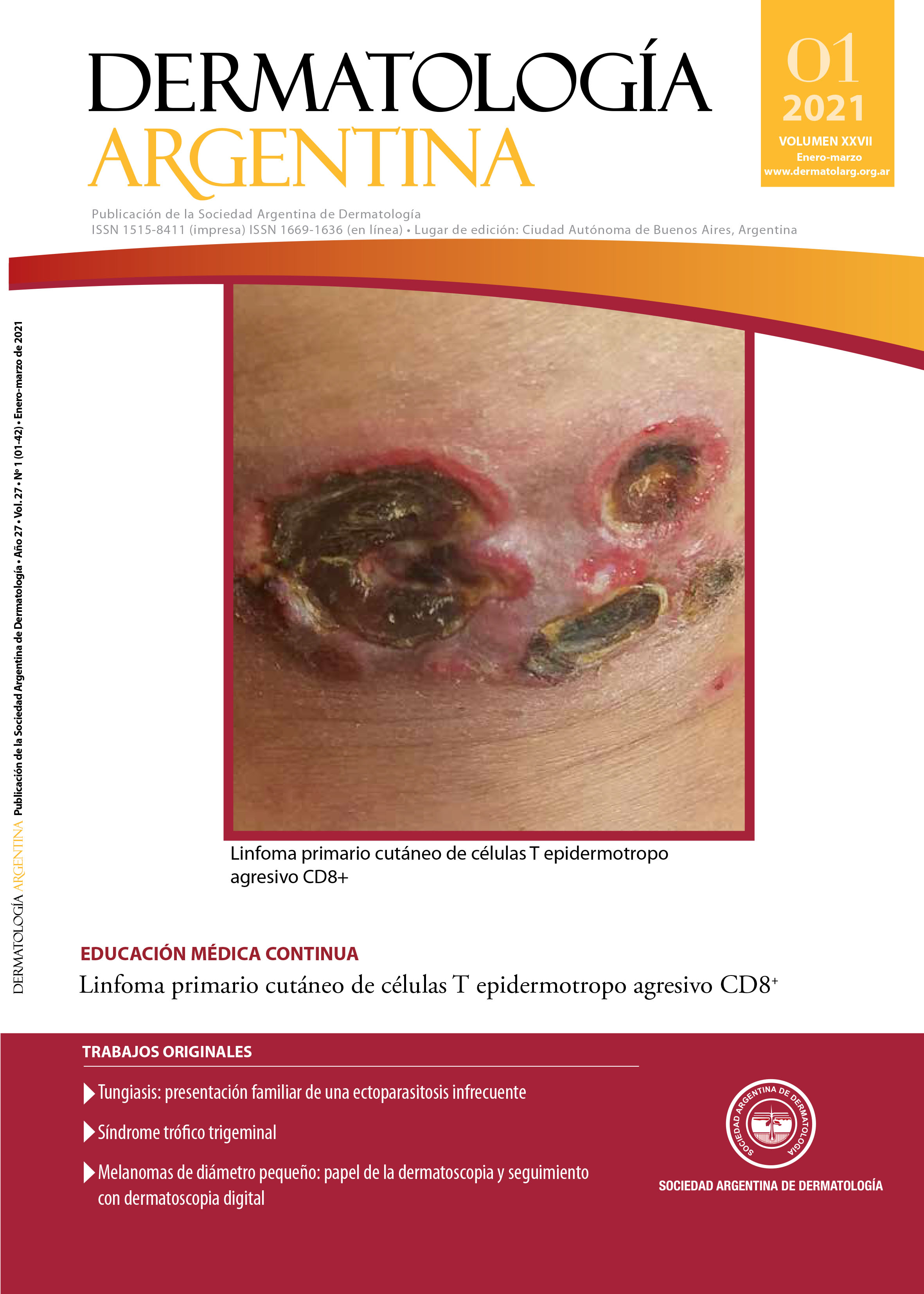Erythematous-violaceous plaque on the finger
DOI:
https://doi.org/10.47196/da.v25i1.2080Keywords:
erythematous violaceous plaque, fingerAbstract
A 37-year-old woman, with no relevant pathological history, consulted for the presence of a lesion on the ball of the second left toe of 8 months of evolution, asymptomatic, of abrupt onset and stable size, not related to a previous trauma, bleeding before minimal friction. Physical examination revealed a purplish-red plaque, 7 mm in diameter, with well-defined edges, an irregular surface, and a central pustule. There was no thrill or rise in local temperature (Photo 1). Dermoscopy revealed a monomorphic pattern composed of multiple, well-defined, red-milky gaps of different sizes, distributed throughout the lesion (Photo 2).
References
I. Cuestas D, et ál. Angiokeratomas, not everything is Fabry disease. Int J Dermatol 2019;58:713-721.
II. Piccolo V, et ál. Dermatoscopy of vascular lesions. Dermatol Clin 2018;36:389-395.
III. Wang L, Gao T, Wang G. Solitary angiokeratoma on palms and soles: A clinicopathological analysis of 21 cases. J Dermatol 2013;40:653-656.
Downloads
Published
Issue
Section
License
El/los autor/es tranfieren todos los derechos de autor del manuscrito arriba mencionado a Dermatología Argentina en el caso de que el trabajo sea publicado. El/los autor/es declaran que el artículo es original, que no infringe ningún derecho de propiedad intelectual u otros derechos de terceros, que no se encuentra bajo consideración de otra revista y que no ha sido previamente publicado.
Le solicitamos haga click aquí para imprimir, firmar y enviar por correo postal la transferencia de los derechos de autor












